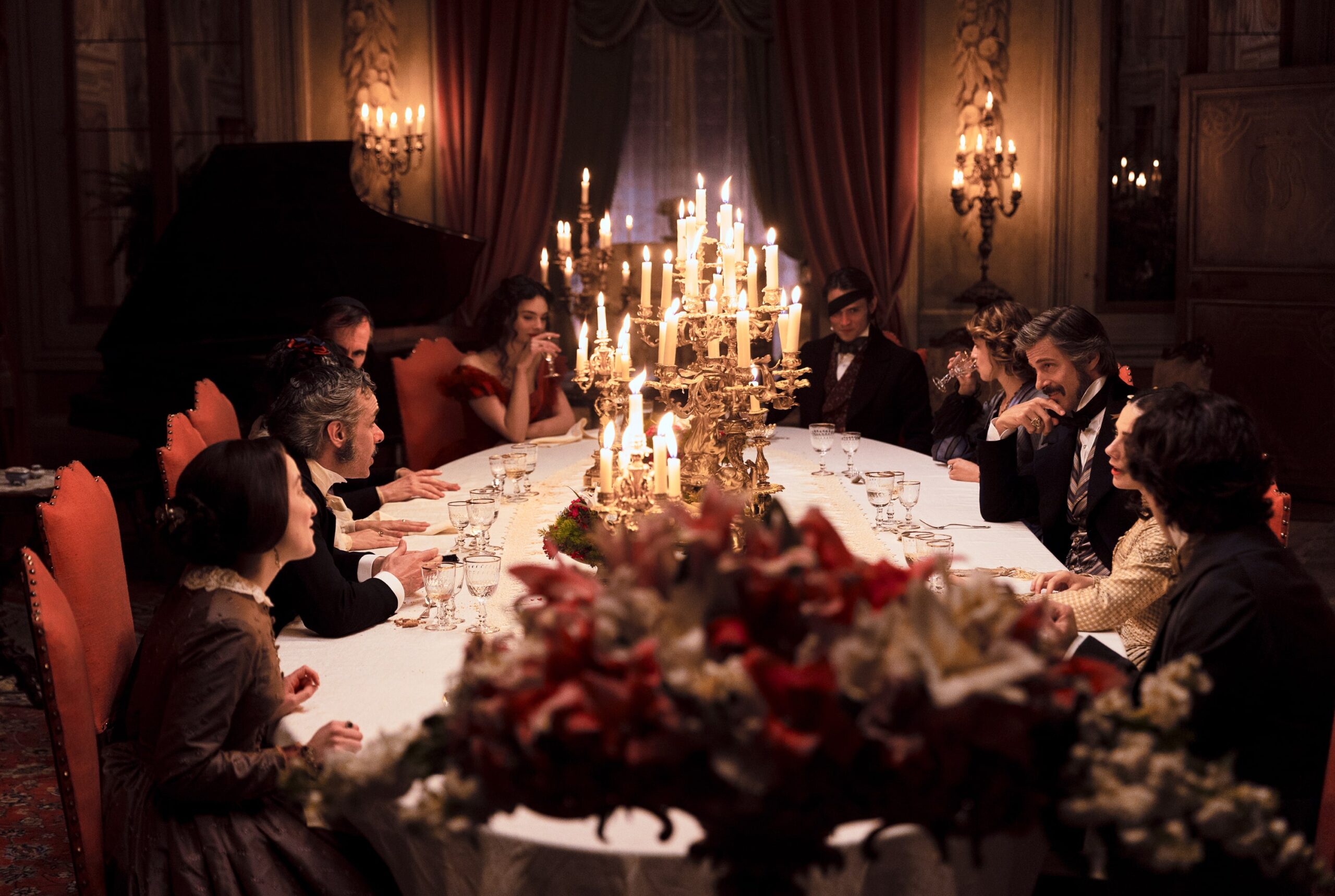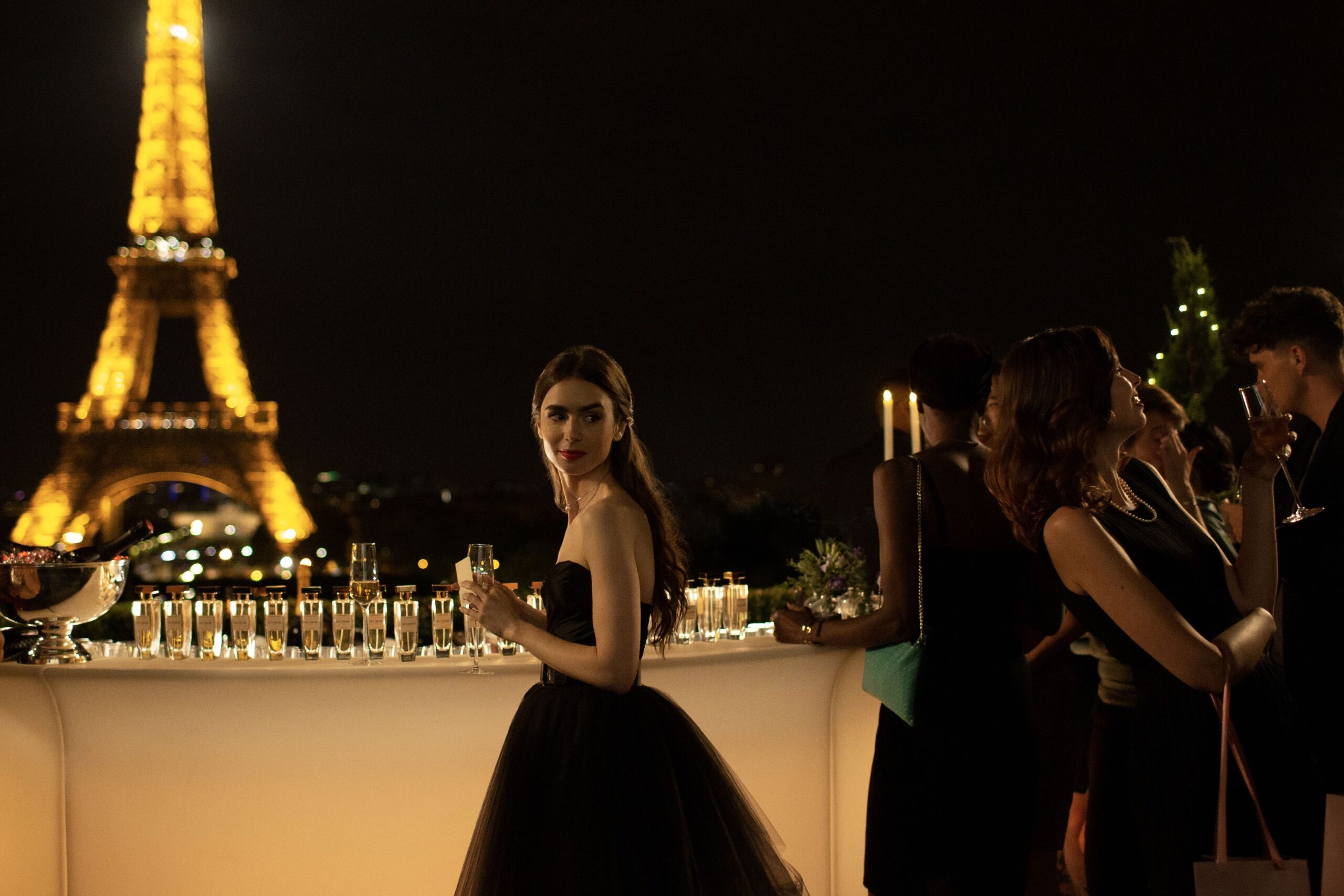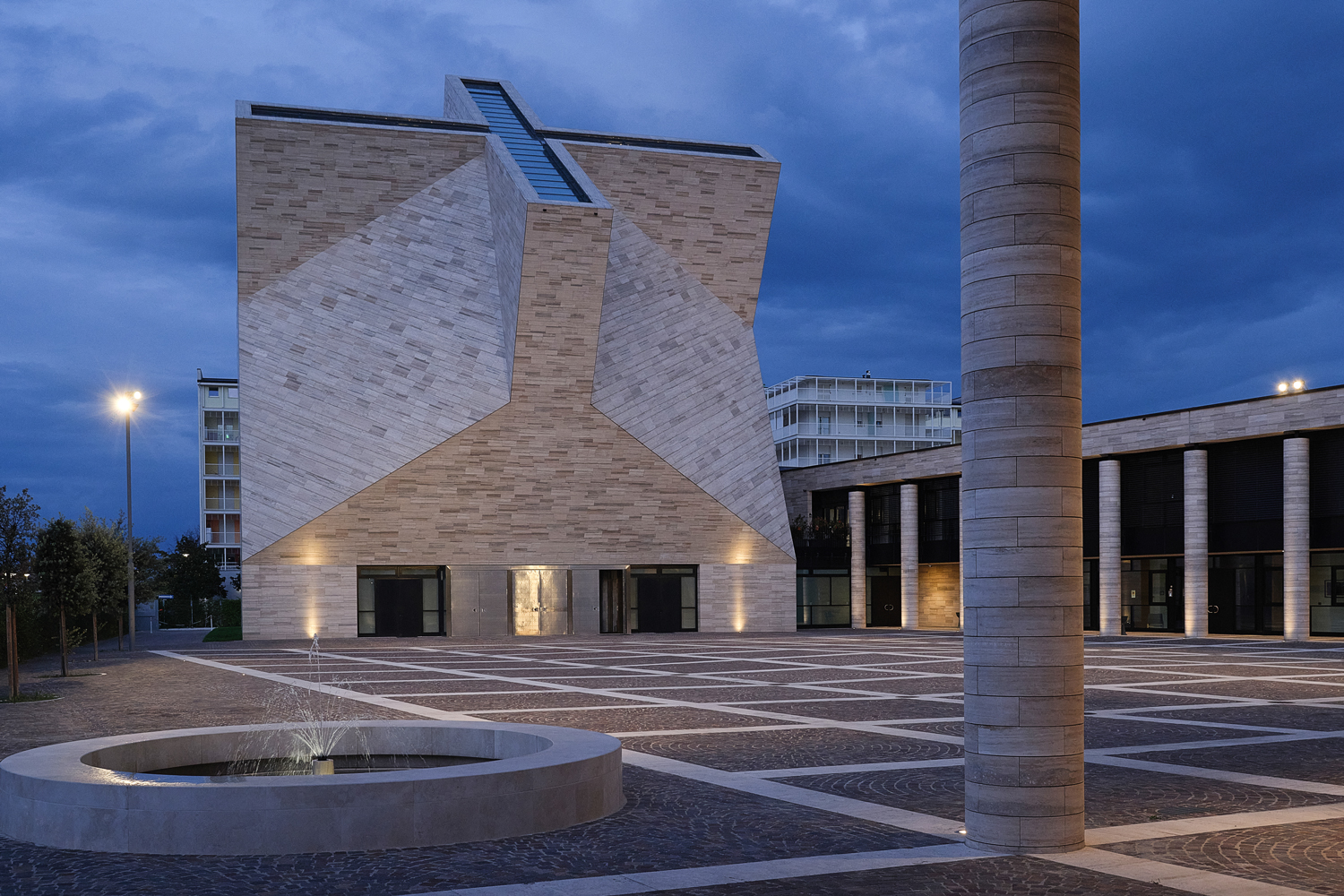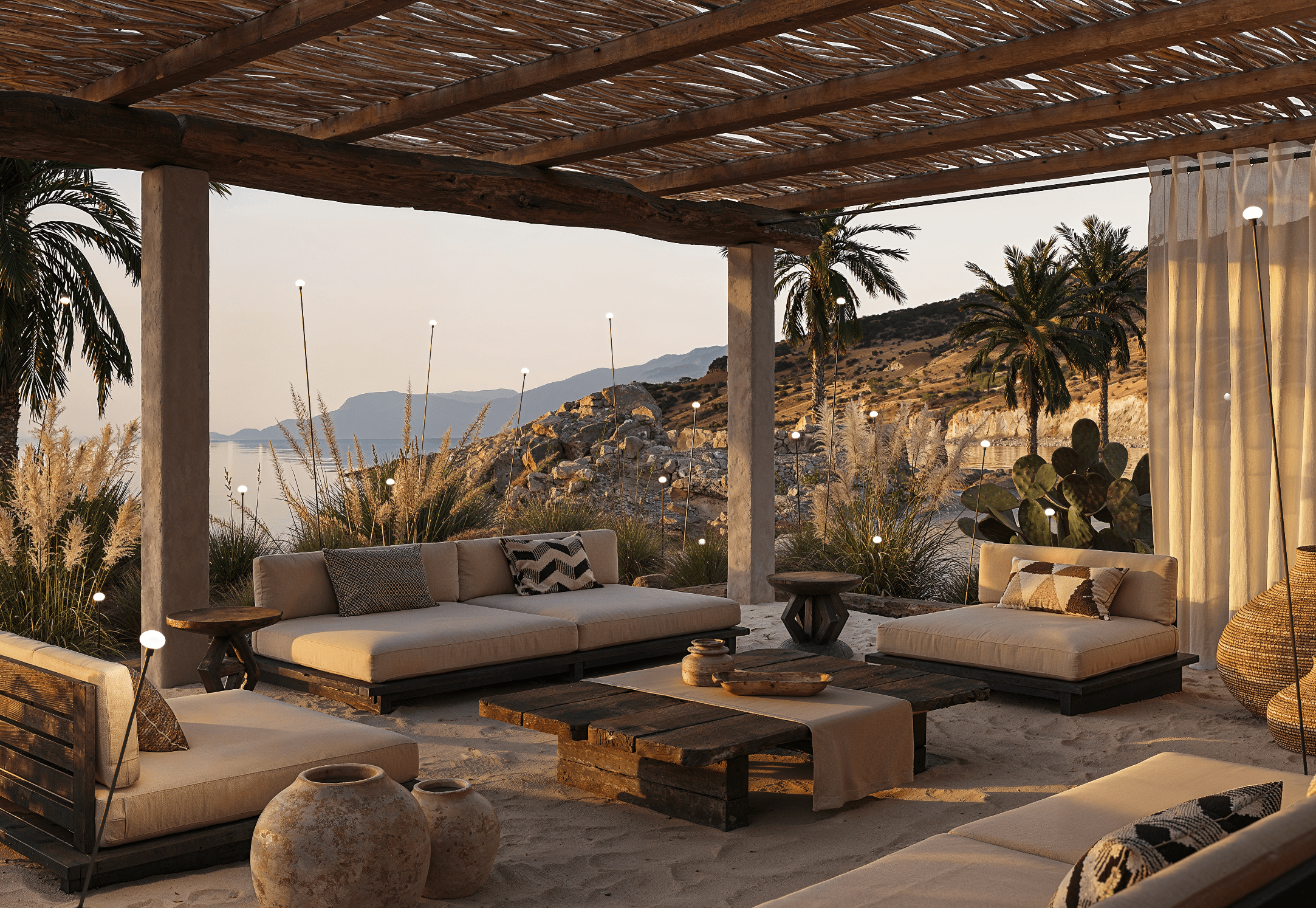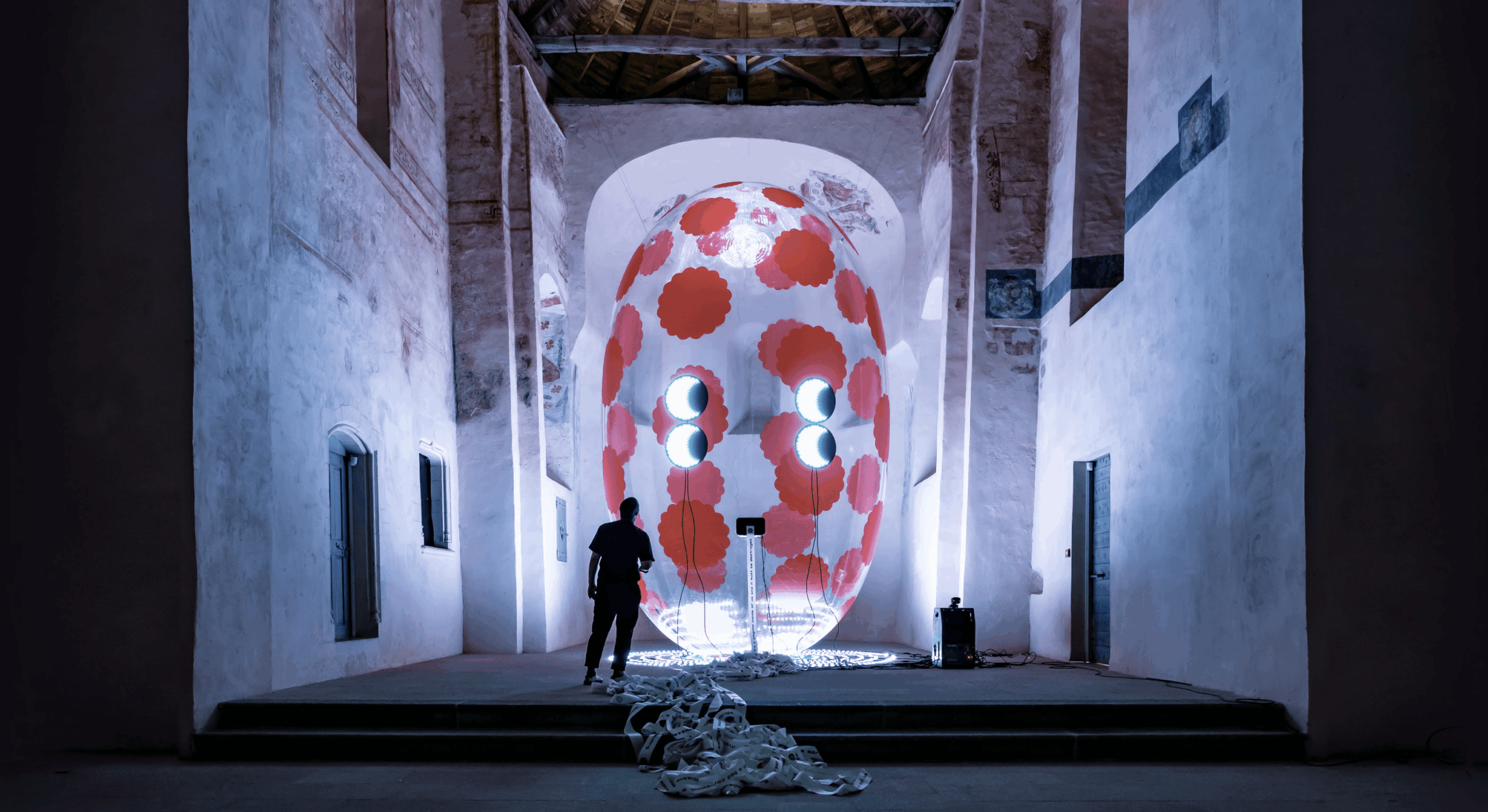Why is a commercial lighting design project generally more demanding and expensive than a residential one, even if it involves the same square footage? Let’s see how purposes, durability, costs, maintenance and other characteristics that might escape the inexperienced eye impact these types of projects and products used in the two different fields.
The goal
While residential lighting must respond to needs related to living and aesthetics, commercial lighting must also take into account other factors, such as the influence of light on sales or on productivity and health of employees. Problems caused by bad lighting, such as visual discomfort or headaches, are not uncommon: office lights in line with anatomical and ergonomic principles prevent this from happening despite long exposures.
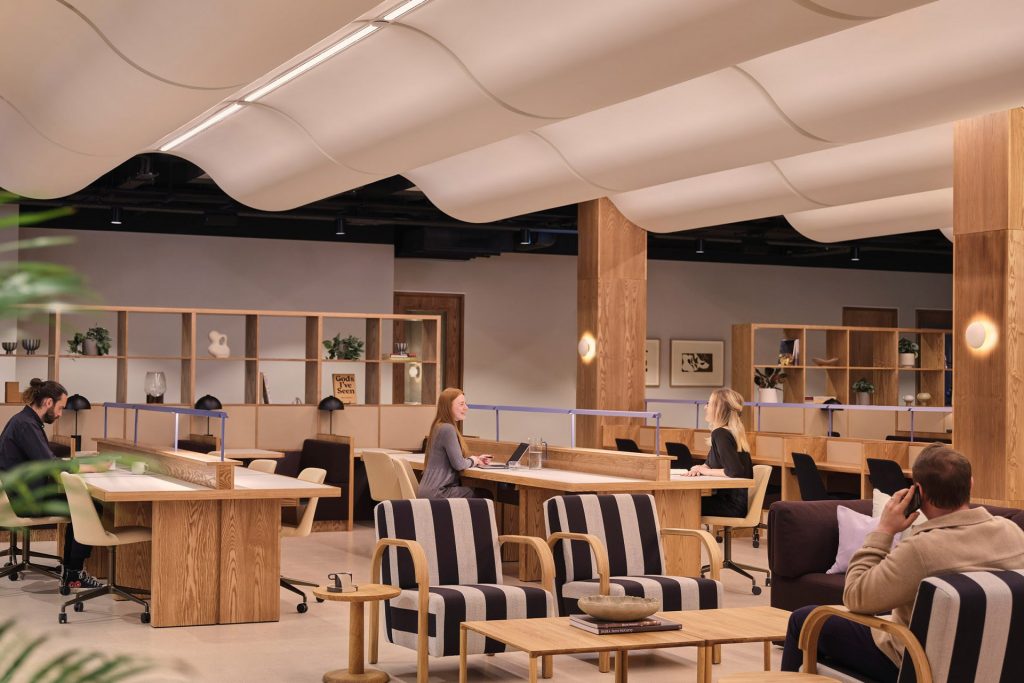
In the field of commercial lighting, each activity has specific needs, even very different from each other: the most important one for shops is to attract customers through windows lighting and to encourage them interacting with the highlighted products.
In the photo 2 (Design. Curiosity), for example, the ceiling light has been designed to imitate the luminous intensity of the exterior, to make it resemble natural light as much as possible, also thanks to the marble-clad walls that reflect much of it. The products for sale, on the other hand, are the only point with dedicated artificial lighting.
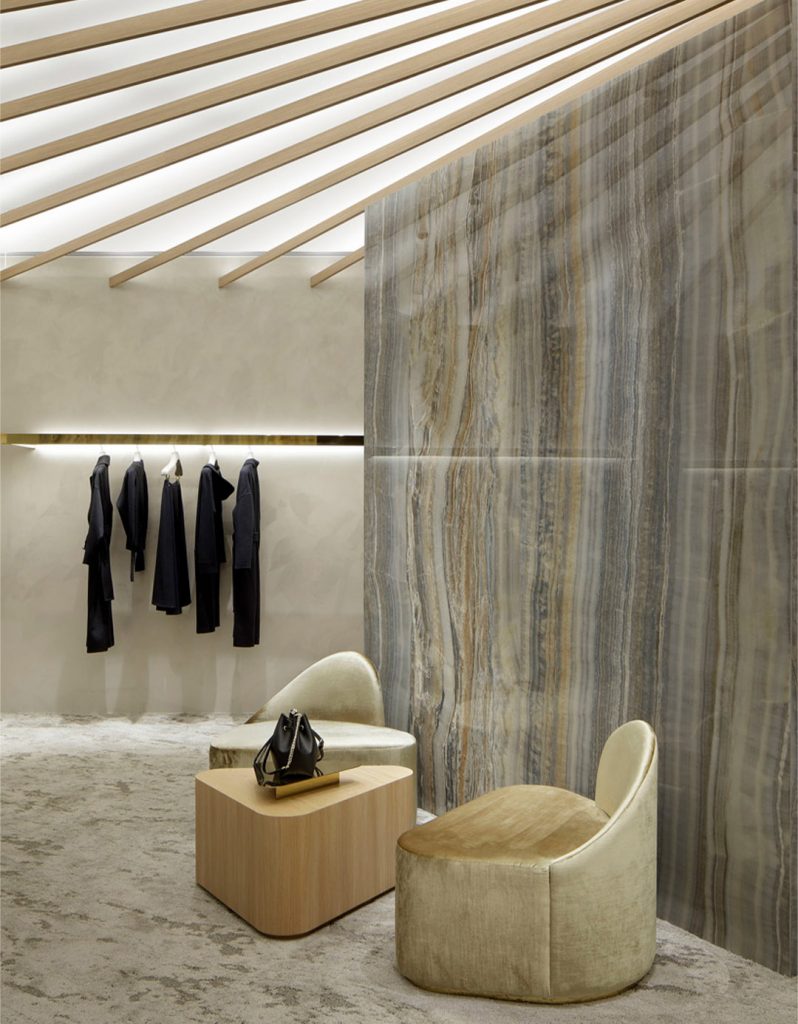
«In commercial environments, specific designs are necessary to meet brightness requirements or particular color combinations»
Restaurants instead need to ensure a certain atmosphere at their tables, both comfortable and in line with the identity of their own brand. In this case, for example, the warm and intimate atmosphere was created by leaving the ceiling in shadow, while illuminating the texture of the alcoves that characterize the room from below and having pendant lamps for each table. In this case they are Naomi Paul’s Monika lamps (photo 3), which also have the particularity of being able to soften the intensity of the light through their cotton diffuser.
In the photo 4 (Perimetro), instead, we see the NEURO suspension lamps designed by Davide Groppi. These lamps embroider bold diagonal lines in the environment and bring the light of the LED directly on the table, directly from the socket.
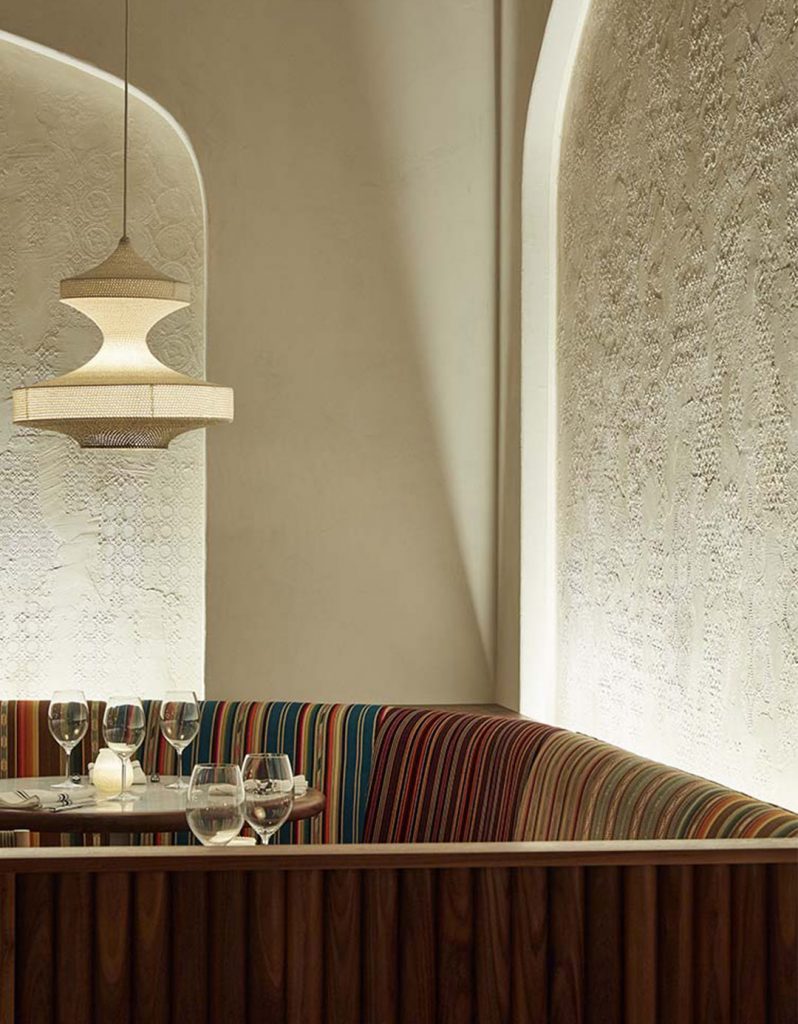
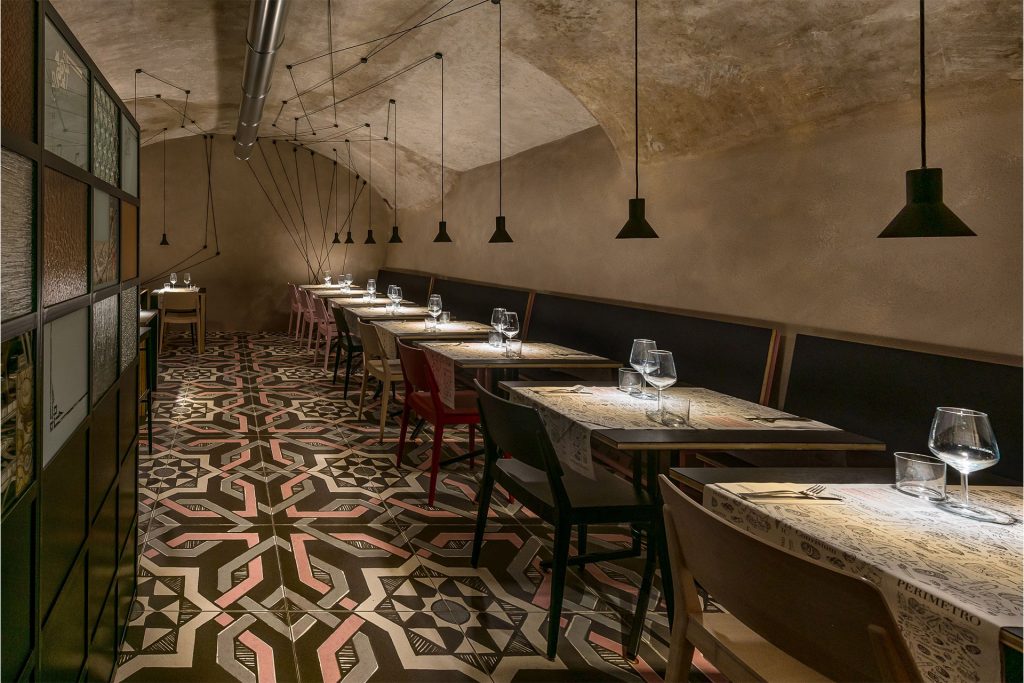
In commercial environments, specific designs are necessary to meet brightness requirements or particular color combinations: just think of the differences between a cinema, a beauty center or a supermarket, all environments that require the development of specific lighting design project.
This is easily seen in lights with different characteristics: a commercial structure, which tends to have fewer entrances for natural light, requires a higher light intensity than a house, with a temperature that tends to neutral or slightly tending to cold colors. On the other hand, at home, where lights have to complete aesthetics, you need them to make the house feel as functional and comfortable as possible, and therefore temperatures lean towards warmer colors.
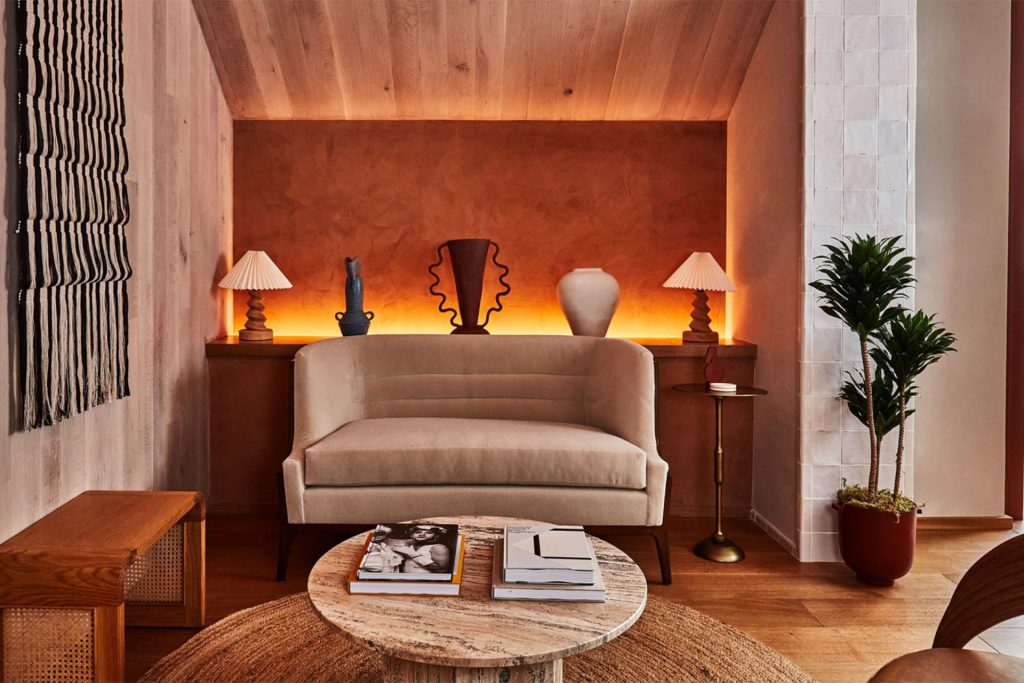
Even for safety issues – and mostly the need to ensure visibility over possible obstacles – domestic and commercial lighting present differences in their planning phase: commercial establishments are subject to large flows of people, and have therefore to invest in lighting that illuminates paths while also following those regulations related to possible emergencies.
As we have seen in the safety requirements there are also those responsible for ensuring the safety of employees, which requires that the lighting products are resistant to the activities carried out: in a professional kitchen, for example, you will have to consider such factors as temperatures, humidity, dirt and possible fumes and choose resistant lights with systems that protect them from external agents.
In residential environments, on the other hand, safety also includes outdoor lighting to limit unwanted incursions or just to ensure its inhabitants can have optimal visibility during dark hours, especially in driveways or doors, or where security cameras are placed.
Durability
Activities such as offices, shops, bars and restaurants make intensive and continuous use of lighting, many of them keep lights on 24/7. This requires lighting products that have been designed and manufactured to be more durable over time, with heavily resistant and waterproof materials that are able to withstand ignition for prolonged times, at higher intensities, and with frequent temperature variations, as well as guaranteeing a high degree of energy efficiency, given the costs of use.
Depending on the type of activity, lights in a commercial environment may have to withstand different stresses, such as dirt and water, bad weather and shocks, that’s why they should have specific characteristics, such as a certain degree of protection (IP) from foreign agents.
Finally, it should also be considered that a commercial lighting design project can also meet contemporary needs, for example by contributing to the energy saving of activities that want to move towards a zero emissions approach – for example by choosing to light their signs through solar panels, or by choosing producers who use materials and disposal processes that adhere to circular economy principles and who are committed to rethinking packaging with a certain awareness towards recycling.
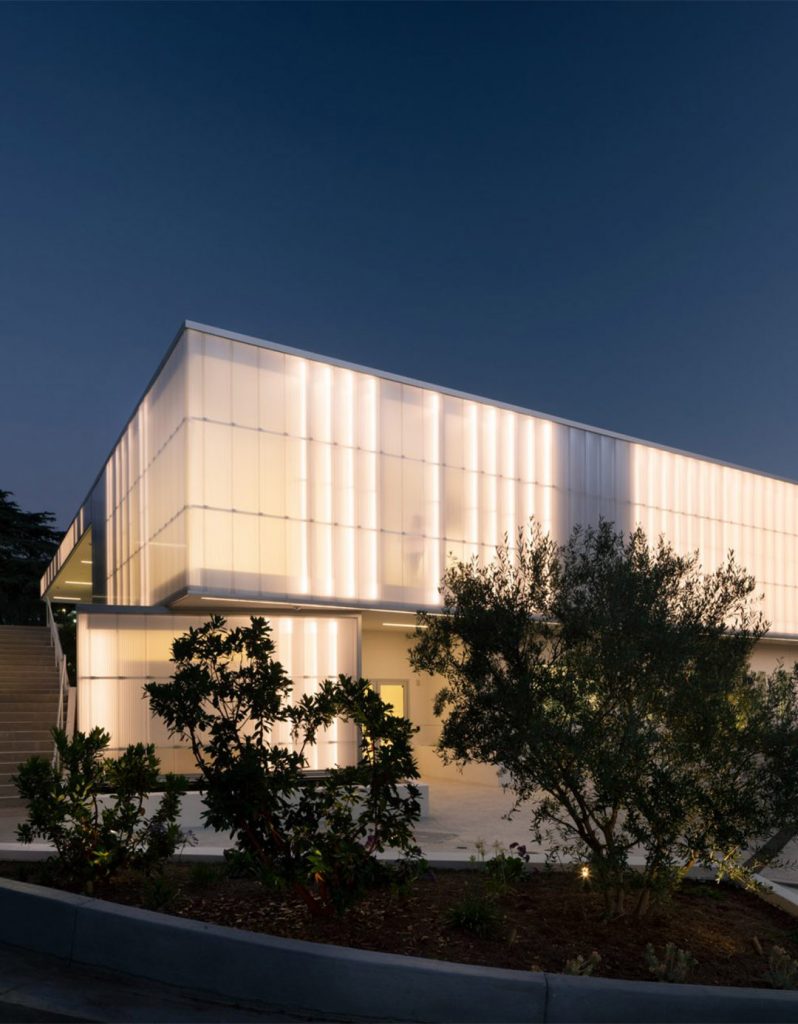
Installation and maintenance
Home lighting improves interior design and maintains continuity with the rest of the design scheme, but it is unlikely that the system, the distribution of light points and the control systems will reach the same complexity of a commercial space. On the other hand, household lights will require limited maintenance, also thanks to their moderate usage.
Since it requires professional products with specific characteristics, the installation of a commercial space could instead require the intervention of specialized personnel, starting from cleaning lights such as LED panels embedded in the ceiling, all the way through the replacement of heavy, delicate chandeliers and lights. And let’s not forget periodic efficiency checks with instruments that measure scotopic and photopic lighting.
And these are some of the reasons why commercial-grade lighting usually requires prolonged warranties, because their installation, maintenance and replacement activities risk translating into high costs should these events occur too frequently.
Costs
Lights that guarantee greater durability, resistance to different environmental conditions, resistant finishes and alloys, a thicker body, additional features (such as the ability to easily change the temperature or the number of lumens) require higher production costs and have therefore inevitable higher final costs for the buyer. The same LEDs can be produced with different components, such as chips and drivers of very different quality, and for this reason products which can appear very similar may result in dramatically different performances when used at high intensities for prolonged times. Products certified for commercial use are manufactured with better drivers, heatsinks, chips and materials, and are therefore more expensive than those destined for residential use.
On the other hand, investing in highly professional lights that adapt to the characteristics of your business equals reducing the costs of use and maintenance in the long term (especially if the design takes place together with the construction phase, so that it is not necessary to subsequently intervene on the masonry). Also, apart from increased durability, lighting design using the latest developments in LED technology and motion or daylight sensors can also help reduce the number of luminaires needed. For all these reasons, providing a lighting design renovation project with an optimization on the type and position of the lights means not only giving a renewed aspect the business but also savings for the future.
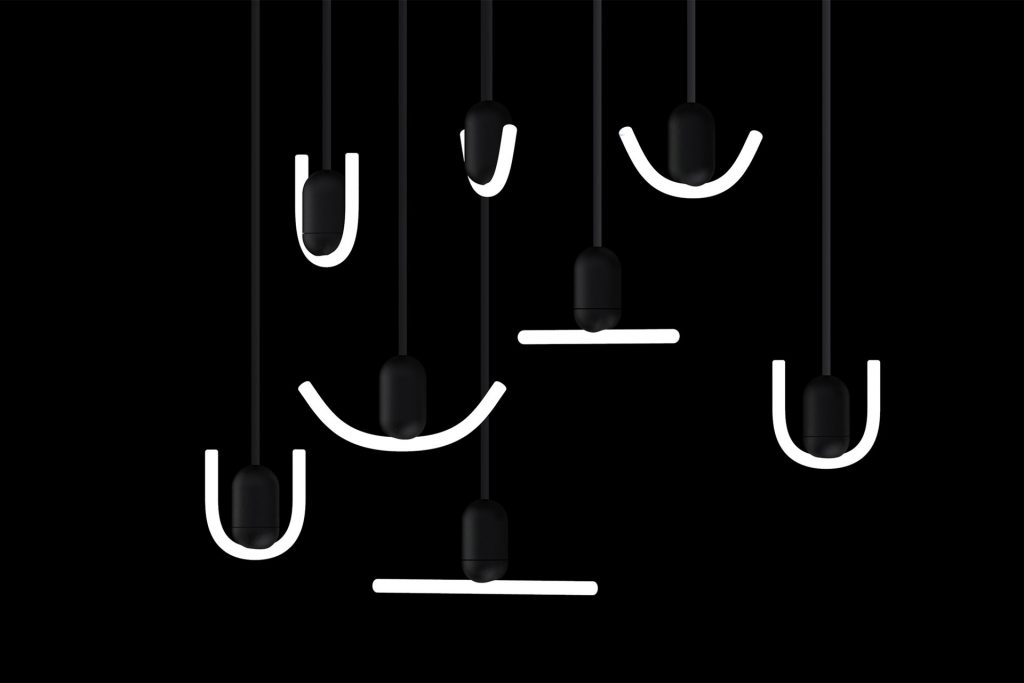
This, on the other hand, does not at all mean that the quality of home lighting products is unsuitable, it’s simply more in line with its use. In fact, this sector is also characterized by constant innovation: just think of smart lights, to be connected to the network and controlled via apps (such as those offered by the Philips Hue range), presence sensors and ambient light sensors that adjust based on the amount of natural light, and to the ever-increasing possibilities of customization of any project: all features of the latest generation in lighting that can make any living experience even more comfortable.
